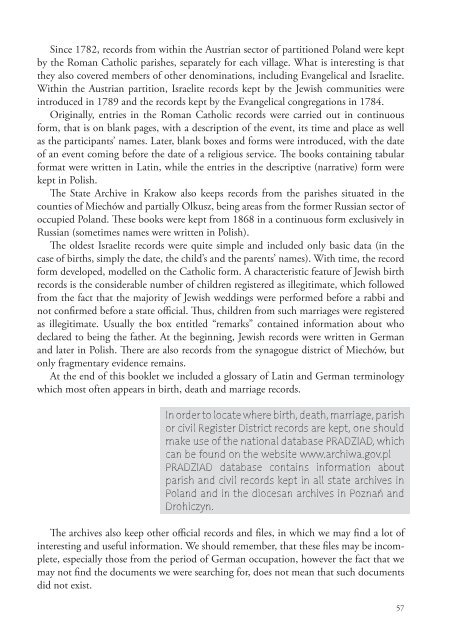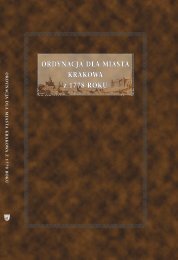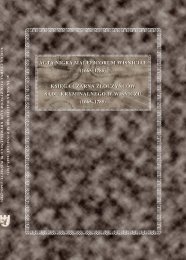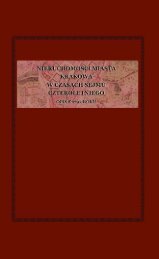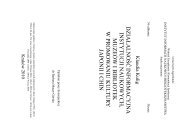W poSzuKiWaniu przodKóW - Fidkar
W poSzuKiWaniu przodKóW - Fidkar
W poSzuKiWaniu przodKóW - Fidkar
You also want an ePaper? Increase the reach of your titles
YUMPU automatically turns print PDFs into web optimized ePapers that Google loves.
Since 1782, records from within the Austrian sector of partitioned Poland were keptby the Roman Catholic parishes, separately for each village. What is interesting is thatthey also covered members of other denominations, including Evangelical and Israelite.Within the Austrian partition, Israelite records kept by the Jewish communities wereintroduced in 1789 and the records kept by the Evangelical congregations in 1784.Originally, entries in the Roman Catholic records were carried out in continuousform, that is on blank pages, with a description of the event, its time and place as wellas the participants’ names. Later, blank boxes and forms were introduced, with the dateof an event coming before the date of a religious service. The books containing tabularformat were written in Latin, while the entries in the descriptive (narrative) form werekept in Polish.The State Archive in Krakow also keeps records from the parishes situated in thecounties of Miechów and partially Olkusz, being areas from the former Russian sector ofoccupied Poland. These books were kept from 1868 in a continuous form exclusively inRussian (sometimes names were written in Polish).The oldest Israelite records were quite simple and included only basic data (in thecase of births, simply the date, the child’s and the parents’ names). With time, the recordform developed, modelled on the Catholic form. A characteristic feature of Jewish birthrecords is the considerable number of children registered as illegitimate, which followedfrom the fact that the majority of Jewish weddings were performed before a rabbi andnot confirmed before a state official. Thus, children from such marriages were registeredas illegitimate. Usually the box entitled “remarks” contained information about whodeclared to being the father. At the beginning, Jewish records were written in Germanand later in Polish. There are also records from the synagogue district of Miechów, butonly fragmentary evidence remains.At the end of this booklet we included a glossary of Latin and German terminologywhich most often appears in birth, death and marriage records.In order to locate where birth, death, marriage, parishor civil Register District records are kept, one shouldmake use of the national database PRADZIAD, whichcan be found on the website www.archiwa.gov.plPRADZIAD database contains information aboutparish and civil records kept in all state archives inPoland and in the diocesan archives in Poznań andDrohiczyn.The archives also keep other official records and files, in which we may find a lot ofinteresting and useful information. We should remember, that these files may be incomplete,especially those from the period of German occupation, however the fact that wemay not find the documents we were searching for, does not mean that such documentsdid not exist.57


